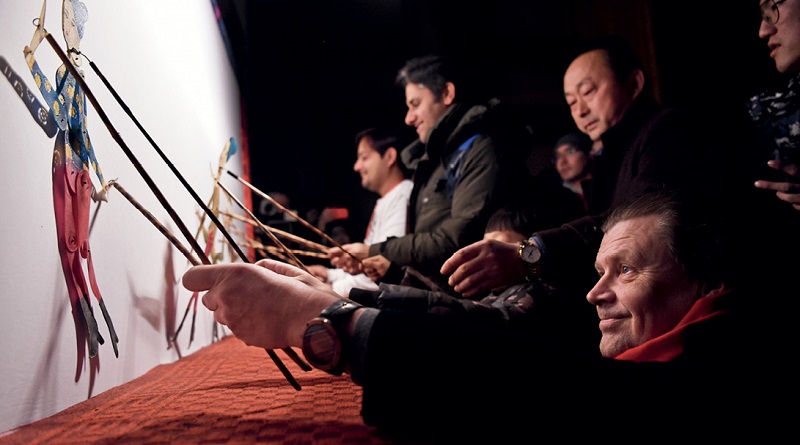
A group of foreign tourists are experiencing first-hand the art of Langzhong shadow puppets in Langzhong on January 31, 2019.
Langzhong shadow play has been popular in 36 counties and cities in the vicinity of Langzhong in southwest China’s Sichuan Province, and is one of three major styles of Sichuan shadow play. Around 350 years ago, a puppeteer named Wang Yuansheng created the Langzhong shadow play by combining the unique characteristics of different styles of shadow play with north Sichuan’s folk customs. In 2008, the art of Sichuan shadow play which Langzhong shadow play is affiliated to was listed as a national intangible culture heritage item.
The storytelling methods and music used in Langzhong shadow play are based on the Sichuan Opera. Its main characters can be categorized into five types: young men (xiaosheng), middle-aged or elderly men (xusheng), women (dan), rough men (hualian), and clowns (chou). The accompaniment music exemplifies elements of popular folk tunes and religious music, and is performed with the suona, drum, and gong. Unlike other styles where two or three puppeteers are required to manipulate a shadow puppet, in Langzhong’s play, one person can manipulate two or three puppets at the same time. The style of clothes which the puppets wear are decorated with traditional Chinese patterns. Distinct from Shanxi shadow play and Tangshan shadow play, Langzhong shadow puppets display plump foreheads, noses, and chins, which give them similar facial features of modern people.
The process of making a shadow puppet involves up to 32 steps. Conventional techniques can ensure the puppet will maintain its original shape for 100 years, and some well-preserved shadow puppets still look as good as new even after 300 years. The first step in making a puppet is to process the leather. A piece of cowhide is soaked in a paddy field saturated with mud. After that, the remaining fur and flesh are scraped off the cowhide with a knife. The piece of leather is then stretched tightly between bamboo poles for a period of time to air dry. The next step is selecting the leather. The skin used to make the head and feet of a puppet need to be harder than the rest, so that the puppet figure can stick to the screen appropriately during performance.
Following the steps of grinding, soaking, and drying, the leather becomes smooth and translucent, and will not warp or shrink. Now, craftsmen begin to draw, carve, and color it. The last major step is assembling together the different parts of the puppet. Because each part of a puppet is made separately, the head, legs, torso, and feet must be aligned after they are assembled. Today, technological advances have injected new vitality into shadow puppet making. Machines are now used to manufacture puppet leather that is smoother and less time-consuming to finish, and the pigments used to make it are durable minerals.
To preserve shadow play traditions in Langzhong, the inheritor of this art has begun to pass on the techniques to more people by teaching classes in multiple universities as well as organizing courses for the general public. A museum was also built centered on Langzhong shadow play, and a troupe set up in the old city of Langzhong, whose performance has become a must-see for tourists.